

By Stephanie Chase
Guest Columnist
New York, NY, USA
Stephanie Chase
Bach - Sarabande*
Born in New York in 1926, Martin Nass earned his Ph.D. in Clinical Psychology from New York University, followed by a Certificate in Psychoanalysis and Psychotherapy at New York University's Postdoctoral Program in Psychotherapy and Psychoanalysis. Until very recently, he was in private practice and a Clinical Professor of Psychology at New York University's Postdoctoral Program for Psychoanalysis and Psychotherapy, where he is now a Clinical Professor Emeritus. Since 1971 Dr. Nass has been on the faculty as a Training and Supervising Analyst at the Contemporary Freudian Society in New York.
Among his many publications are: "The development of conscience: a comparison of the moral judgments of deaf and hearing children" (Child Development); "Some aspects of a psychoanalytic interpretation of music" (Psychoanalytic Quarterly); "From transformed scream, through mourning to the building of psychic structure: a critical review of the literature on music and psychoanalysis" (Annual of Psychoanalysis); and "The mind of the composer" (The American Psychoanalyst). Dr. Nass has also presented papers on many topics that include "Listening in Psychoanalysis and in Music" (New York University Postdoctoral Program) and "The Elements of Creative Imagination" (Brooklyn College of the City University of New York). An avid amateur violinist, Dr. Nass is a longtime participant in chamber music master courses and workshops throughout the United States and abroad.
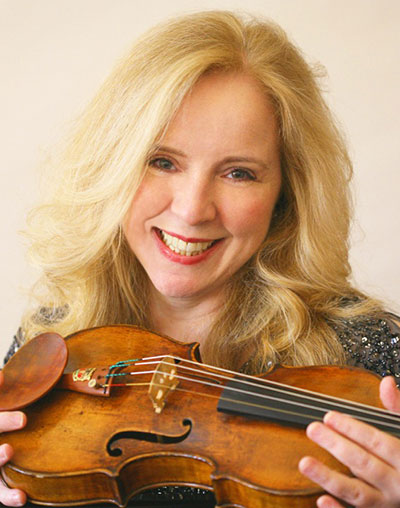
Stephanie Chase
STEPHANIE CHASE: What originally drew you to analysis, and how did you come to play the violin?
MARTIN NASS: I was serving in the Navy in World War II in the combat zone of the Pacific arena, where the other sailors and I experienced mainly two emotions; either we were frightened or bored. During the bored periods I discovered in the ship's library what were then the four volumes of the writings of Sigmund Freud (and these are now twenty-four). I began reading them and realized that this was for me. When I returned home I resumed college and studied psychology, and obtained my master's and doctoral degrees.
STEPHANIE CHASE: It's remarkable that your ship had this publication in its library.
MARTIN NASS: My ship was a light cruiser that operated with the Third Fleet in the Pacific under Admiral Halsey. It had a crew of 1,200 men and was 600 feet long and displaced 10,000 tons.
As for my initial interest in the violin, when I was a young boy my older sister played the piano and I would listen to her lessons. She was kind of tone deaf, and after her lesson was finished I would go to the piano and play her music from memory. When I was seven or eight, I asked my mother for piano lessons and she did an interesting thing; she protected my sister by saying that pianos were for girls and violins were for boys, which is how I started taking violin lessons.
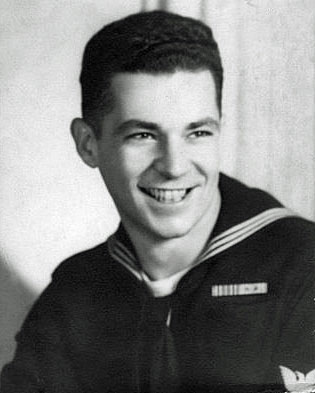
Martin Nass
STEPHANIE CHASE: You and I first met a number of years ago, and it was my honor to be partnered with you at a symposium on artists and analysts that took place over a couple of days at a resort in the Hudson Valley. I also recall that at the conclusion of our presentation, one of the analysts prefaced a follow-up question with a comment stating, essentially, that all artists are narcissists. At the time, this surprised me and even hurt my feelings, but I have come to realize that it is not necessarily a harsh concept.
MARTIN NASS: What I think she was saying is that an artist has to put himself or herself in the center in order to produce something. An artist can't really be the kind a person who is totally self-sacrificing and only thinks of other people, because you have to work and look at yourself and get the materials from inside of yourself, even though they may be stimulated by something externally. They then are reworked into the artistic product. A lot of the problem with the term "narcissism" is that it has taken on so many meanings that are mostly negative – for instance, Donald Trump is a narcissist.
STEPHANIE CHASE: Thank you, I was going to ask about him but I'm glad you volunteered that!
MARTIN NASS: But there's also such a thing as healthy narcissism. You have to care about yourself and be interested in yourself.
STEPHANIE CHASE: A kind of self-sufficiency? And has the definition changed over time?
MARTIN NASS: Yes, and previously it had a mostly negative connation but I don't think it does now. It can, in somebody who never thinks about anyone else, but in many artists it reflects something that is necessary. It's now a more positive term than when it originated.
STEPHANIE CHASE: In working with your patients who are artists, would you say that many of them have a lot of self-doubt?
MARTIN NASS: I would say that most of them – the good ones – have a lot of self-doubt. Classical narcissists don't show any self-doubt. They know everything, they're on top of everything – but it's mostly a façade. And if you scratch the surface you see that many of them are very afraid underneath. The narcissistic façade is more of a form of protection than a real character.
STEPHANIE CHASE: Because of your lifelong interest in music and the creative process, you have done extensive research on composers and describe the act of creation as something that is not only difficult but even frightening.
MARTIN NASS: I think this is true of most really creative people. I think they have to tap something that is very deep within themselves, rework it in their own unique way and then be able to express it to the outside, and in order to do it, I really feel that they have to be very courageous. Because there are ways to express ideas that can be glib or routine, like the composer writing the same piece of music in different forms over and over again. But where you see the development is in this inner examination. And you can trace the origin of somebody's work – like Beethoven, for instance, in his C minor string trio. You see a variation of that work in the opus 18-string quartet in C minor, where he uses some of the same material but worked in a completely different way. And when you play some of his later period works you can sense the germ of those ideas and how brilliantly he's put things together – I couldn't conceive of anyone else doing this in such an imaginative way.
STEPHANIE CHASE: I find it fascinating to see what happens between his opus 12 violin sonatas and opus 13, which is the Pathetique Sonata. The third opus 12 sonata is when things are suddenly leaving the classical form altogether; it's very expressive and personal music, whereas the first two are more constrained in terms of the expression. This period also coincides with the onset of his hearing issues, which in 1798 are starting to torture him, and it looks like a pivotal time to me.
MARTIN NASS: Beethoven's later music such as the "Serioso" string quartet, which is opus 95, is a groundbreaker that is very challenging to play due to some harmonies that are difficult to understand. His opus 96, which is the last violin sonata, is for me one of the best pieces he ever wrote. I really think that piece is a conversation, a real dialogue. And then a few months later he writes the "Archduke" piano trio, opus 97, so that was also an amazingly productive period. Here's an example of somebody who wrestled with internal demons but who had the ability to master them.
Analysts used to have a kind of arrogance; because they were analysts they felt they could explain everything. And they would have what, to me, were wild theories about the creative process, that it was a form of insanity. It's possible for a creative person to be disturbed, and many of them are. This is because they have such access to early unformed thought processes, nonverbal thinking, or can think in musical terms. This can be said to be analogous to the kind of thinking that one sees in the psychoses. That is, to early, non-verbal forms of thought. However, unlike the psychotic, the artist has the capacity to hold onto and recapture these early forms and work them into his or her art. In other words, to hold on to a form of thinking that one sees in children. After all, Picasso is known to have said that it took him his whole life to paint like a child. The artists really learn how to get back to those early childhood thoughts and rework them; however, the person who does not have that talent can have the access but might end up emotionally disturbed. Van Gogh was psychotic, but his most productive times were his last couple of years.
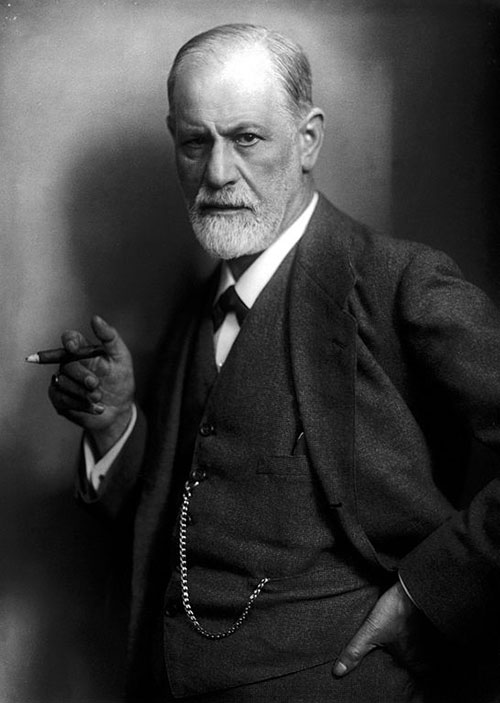
Sigmund Freud
STEPHANIE CHASE: In the artists who repeatedly revisit themes, such as Van Gogh's many paintings of his room, do you find that this is a compulsive behavior?
MARTIN NASS: It's all a form of working on something. You see this in the evolution of an artist's work, or a playwright like Eugene O'Neill. Starting with his early play, The Great God Brown, he was always working on his family and used the theme of his family conflict a number of times in his plays.
STEPHANIE CHASE: Would you think that these artists are looking for truth?
MARTIN NASS: They're looking for their own truth.
STEPHANIE CHASE: For me to feel like I have done a successful interpretation, I have to feel that I am revealing the truth as I determine it about a musical work. I try to honor the composer's sound world and ideas, and it helps to understand something about that composer and the setting behind the work. I also have to present what I believe about the music, and sometimes enter the realm of "How does this music want to be played?" I try not to impose myself on it – but ultimately I do.
MARTIN NASS: Composers have told me that sometimes in performances on their works they hear things they didn't intend but they think it's great.
STEPHANIE CHASE: It's an abstract work until it's performed.
MARTIN NASS: Roger Sessions, whom I interviewed, said that for a performance to be complete, the performer has to go through the same stages as the composer, and the listener has to do that as well.
STEPHANIE CHASE: I think in an ideal world you have listeners who have a familiarity with the work and the kind of music; unfortunately that's not usually the case. But I think that in terms of interpreting the composer's music, each composer is a different personality and distinct individual. For example, when I teach, I am trying to share some of the interpretive process with the student as best I can. Starting with the idea of dynamic markings; a simple point to make, for instance, would be to compare Mozart's dynamics with Beethoven's. In music written only 25 years apart there's a huge development, as Beethoven uses many more dynamics than Mozart, including what we call accents. For me the questions include, does Beethoven's hearing impairment cause him to impose more information through the score? He is also quoted as having a lack of respect for the musicians of Vienna, so if he thinks they are poorly trained perhaps they don't know how to play music well and require more instruction, plus he is writing a new style of music. So possibly all of these things come together and lead to the increased editing of his music. For me this is a beginning point, and because the composer has put in these indicators I feel we need to examine them. Often the student – and the professional – will think only in terms of technique, but we need to think in terms of the actual sound, because that is the music. The technique is merely a vehicle.
MARTIN NASS: Before I began to interview them I thought that composers were always people whose major sensory organ was the ear, and I was very surprised to learn that this is not so as some are visual people. When they are writing they visualize the score and don't hear sounds. For example, the composer Ross Lee Finney said his music came from a sense of body tension and from gesture. He felt a kind of tension that he then translated into music. He also wrote a work for two cellos based upon visualizing the letter X, in which he has one cello start from the bottom and the other from the top, and they cross in the middle. Another composer, George Crumb, told me that his music has a lot of echoes in it, and he feels that this relates to his having grown up in Appalachia, where he could hear sounds echoing among the mountains. Finney also has a piece called "Crack the Whip" which developed out a sense of gesture. He's from North Dakota and as a kid he and others played a game on the frozen lakes in which they would line up and swing each other around.
STEPHANIE CHASE: It was my privilege to know Earl Kim and to play some of his music, which he called "expressive while using a minimum of notes." I was playing his Caprices for solo violin and having a problem understanding the music of one of them, which was very still but for small gestures and seemed without context. When I asked him about it he replied "That's Eva [his then 4-year-old daughter] sitting quietly on the porch and watching the autumn leaves fall down." This made a world of difference to me and I then understood how to play it. Musical tension is created through dissonance and consonance, and I think all composers use it.
MARTIN NASS: Wellesley College has fellowships for young composers and hosts a yearly Composers Conference in the summer, which I've attended nearly every year since 1978. There are major concerts in which the music by these composers is performed by the pros, and I recall one piece that was very dissonant and almost without real music, more like percussive crashes and squeaks. Afterward I asked the composer about it. He replied that his grandmother was in a nursing home and he was recreating the sounds of squeaking doors and crashes as she heard them from her room.
More recently, I felt that the composers had evolved and mentioned to the director that I thought they were getting better. He replied that they're not getting better – you're just getting used to it!
STEPHANIE CHASE: My husband was an experimental psychology student in college and has told me that people wish to hear the familiar and look at what's new.
MARTIN NASS: And this may be why traditional audiences don't take to contemporary music.
STEPHANIE CHASE: But there are avid new music fans who are disinterested in standard classical music. When I lived in Boston I played in a contemporary music concert that included a string quartet that the others and I found nearly unplayable – its last movement featured a very slow tempo and quarter notes tied over to a quintuple sixteenth note, with everyone changing at a different time. We were all nodding our heads to show the beat but it was just about impossible to play without a click track. Fortunately there was a recognizable moment in the cello part that was our emergency exit, and when we heard this we knew where we were and were able to finish together. Although it felt like a disastrous performance, the audience gave us a big ovation.
MARTIN NASS: In my work with the composers I was interested in learning in how the musical ideas came through and what inspired them, and how they went about composing a piece.
I interviewed the composer Donald Martino twice, 25 years apart, who told me that before he composed he had to do a complete cleaning of his room. With a number of these composers, before they begin a session they often have routines like sharpening their pencils. Bernard Rands was a Harvard composer from Wales, and told me that the men in his family were coal miners who would get up as light was breaking and go to work. He did the same when writing music, as that was his job.
STEPHANIE CHASE: You have written quite a lot about talent that survives, and even thrives, in the face of emotional or physical adversity. As you know, Sam Sanders was a very well-known collaborative pianist who played with a lot of the greats, and it was my privilege to play with him at the Cape and Islands Festival where we performed a number of works together. He had been a blue baby with a congenital heart problem and was in chronic bad health, and his heart's valves were replaced when it was still an experimental procedure. Ultimately he had a heart transplant and, some years later, another one that failed and he passed away.
He was an amazing person and so admirable, with quite a naughty sense of humor, and he practiced in a particular way, usually in the middle of the night, pounding out scales in double stops up and down the piano. Because he had such poor circulation he had to keep his weight down and was very thin, but this method of practice defied his frailness. Before a concert he had a routine, which I wasn't aware of at first, but I then saw him blow his nose and wash his hands three times in a row, and he did this before every concert.
MARTIN NASS: That's a magical ritual.
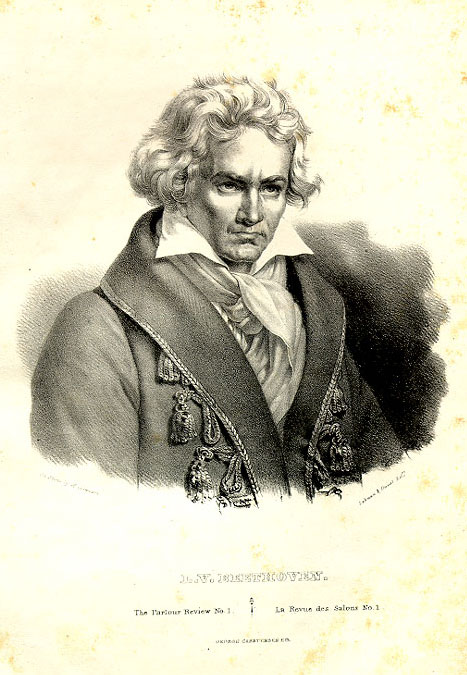
Ludwig van Beethoven, etching
STEPHANIE CHASE: Each concert was of supreme importance to him, which was such a great example. Here is someone who played in the White House and at Carnegie Hall, who probably felt terrible nearly all of the time, yet he treated a summer concert in a small church with the same dedication. I recall playing Franck Sonata with him and noticed that he had a fingering over every single note, including repeated notes. To play that piece with him was extraordinary because it was so energetic and fully committed within the moment, and he was such a perfectionist.
MARTIN NASS: This is another example of autonomous gifts, which enable one to rise above conflict and hold onto talent and motivation. If it takes a ritual to do it, so be it. In his case, the rituals were very reassuring and gave him more sense of control.
The autonomous gift is separated from the person's conflict and, again, Beethoven provides a good example, as he wrote his greatest music while having difficulties with his nephew and sister-in-law, in addition to coping with his deafness.
STEPHANIE CHASE: Schubert must have known that he was in dire health towards the end of his life, which is when he started writing really great music of epic lengths.
MARTIN NASS: You've hit on something very important; being able to end a piece and let it go, and that's a problem that Schubert had and I think it has to do with needing to prolong his life. There's a separation issue with finishing something. And this is true in visual arts as well, of painters going into a gallery and working on a painting while it was hanging there, and not being able to finish it.
STEPHANIE CHASE: Over the past several years my husband [Stewart Pollens] has written books about various aspects of musical instruments and I have witnessed the painfulness of this process, as he is a perfectionist. To make a recording, to complete a composition or painting, or publish a book or article must be one of the challenging things a perfectionist can face.
MARTIN NASS: It's not going to be perfect. It's never perfect.
STEPHANIE CHASE: And I think that for performers, it's a bit easier for us because we have the hope of playing the work again. But when we make a recording that can be a challenge. I prepare carefully for a concert but in recording there is no going back – if you decide to change your interpretation of something six months later because you thought about the piece a little bit more and prefer a different tempo, for example, you can't.
MARTIN NASS: That's a form of separation anxiety. But you should say okay, it's done and let's go onto the next thing.
STEPHANIE CHASE: As someone who plays music and returns to a lot of works over a lifetime, is it reassuring and do you find that you bring new insights to it?
MARTIN NASS: Yes, both, or if it's a piece with other players it's a whole different experience.
STEPHANIE CHASE: In playing chamber music I find that I learn from others and often change ideas about a piece substantially because of someone's influence within the group.
MARTIN NASS: Well, that's what growth is about.
STEPHANIE CHASE: Do you find that there are certain aspects of playing chamber music that are very helpful to people in general, for instance among students?
MARTIN NASS: Learning how to listen to somebody else, and submerging your own ego to what's around you, and a lot of people find that very difficult.
STEPHANIE CHASE: This requires cooperation and collaboration.
MARTIN NASS: The first year I went to the Composer's Conference I met a wonderful pianist, a woman from the south. She had hands with very long fingers and was the professional accompanist for all the students in the DC and Virginia area, so she knew how to play chamber music. We became very good friends. The first time we played together she stopped me and said, how come you play chamber music so well? I said, because I listen for a living. You have to learn to listen to what's around you.
STEPHANIE CHASE: It's also about the ability to criticize in a constructive way, when everybody has the same goal, and to develop an interpretation that works for everyone.
MARTIN NASS: In playing with others, if somebody plays a phrase and you play it after, you do it their way – even if you don't agree with it.
STEPHANIE CHASE: I was once at a summer chamber music festival and playing second violin in a string quintet, and two of the players were having a conflict about some of the music. The violist was Marcus Thompson, who had been quietly listening to the dispute, and he then chimed in to say, "It's chamber music and I play this [passage] first."
Sometimes musicians who are playing an accompanying figure think that they're in charge, rather than the person playing the melodic line. My feeling is that the music's interpretation is abstract and that when differences arise. It's most efficient to not discuss and just try playing both ways. Usually it's very clear what works better.
MARTIN NASS: Let's try it your way and then we'll try it my way.
STEPHANIE CHASE: This is something that I teach to my students.
MARTIN NASS: You're teaching people how to get along together.
STEPHANIE CHASE: Speaking of getting along, have the composers that you interviewed ever mentioned having had issues with conductors?
MARTIN NASS: Well, Ralph Shapey was very disturbed that the New York Philharmonic never played his music, as he considered himself a modern day Beethoven. But as a biographical addendum, that's one of the reasons I didn't go into music professionally. I knew I didn't have it as a soloist and the chamber music and freelance world was not nearly what it is now, but I also knew that I didn't want to play under some conductor's beat. That was my decision when I was 16 or 17.
STEPHANIE CHASE: I remember reading, a number of years ago, about a survey among professionals in different fields, which found that the level of satisfaction was about the lowest in orchestra musicians in terms of the enjoyment that they got from their jobs.
MARTIN NASS: There's little self-expression. It's all subservient to what the conductor wants.
STEPHANIE CHASE: But if they really admire the conductor and the ensemble, it could be another matter, as in the Metropolitan Opera Orchestra. Those are great players and they work super hard.
MARTIN NASS: Thanks to James Levine, whose retirement performance I attended, the Met is one of the best orchestras around.
STEPHANIE CHASE: I'm going to change the topic now. It was the anniversary of the violinist Michael Rabin's birth a few days ago and I was looking him up again. Ivan Galamian, who taught him starting when he was very young, thought he was the greatest violin talent he'd known, including Itzhak Perlman. Rabin died at age 35 following a fall in which he evidently struck his head, and I saw his body at Riverside Chapel. I'd never seen a dead person before, and it was a strange situation also because displaying a body in an open coffin is such a non-Jewish thing to do. He had a stage mother, who as I recall was inconsolable at his death. It's fascinating because he had been a great prodigy, but as he reached early adulthood Rabin began to fall apart as a violinist and as a person.
MARTIN NASS: That's an interesting story about musical prodigies – or prodigies in any field. There's a book called Prodigy written by Norbert Wiener, who was a mathematical genius, and he told about how he was pushed and prodded and not treated as a child, and how terrible it was. The transition between a child prodigy and a successful adult is not bridged by many people. Menuhin is one of the few people, I think, who did.
STEPHANIE CHASE: And even he had issues. You heard Menuhin play, I'm sure. For me it was very instructive, some years ago, when Biddulph Records re-released his early recordings. The copyright on the original recordings had expired, and they included his Elgar Concerto with Elgar himself conducting. Elgar does not actually follow him all that well and Menuhin manages to hold onto these huge phrases and does so beautifully, and he's all of sixteen years old. And then there are some recordings from a little bit later and I start to hear some issues, including the bowing problem he had at the frog. I have great respect for him as a musician, but a noticeable discomfort developed early on, and I recall my teacher, Sally Thomas [who was Galamian's principal assistant] discussing this and saying that maybe it's from doing yoga. It was unclear as to whether this trouble was emotional or physical.
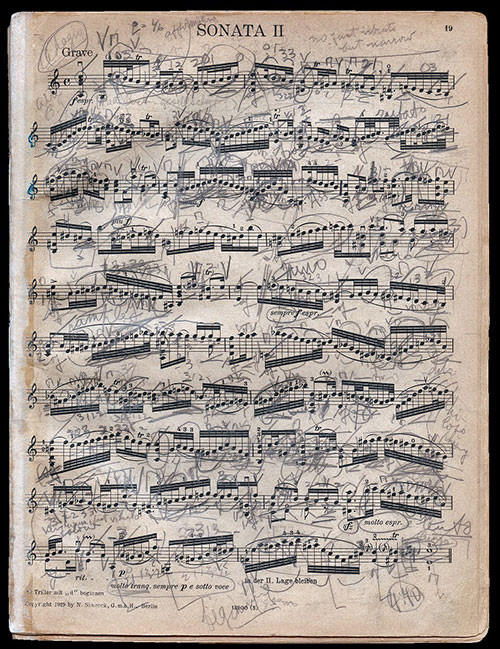
Bach Menuhin
Courtesy of Foyle Menuhin Archive and The Strad
Here is a page of music with his markings that The Strad put online recently, which is the Grave movement of Bach's Sonata in A minor for violin solo. To me it is very startling to see the numbers of markings because it looks quite chaotic, although Menuhin seemed at ease in every setting and could speak so many languages. But I look at this and wonder what was going on inside.
MARTIN NASS: I am totally struck by the number of markings and the kind of agitation that they seem to reflect. While I know nothing of graphology, my surprise was because Menuhin seemed to be such a relaxed player in performance and I would not expect to see these kinds of markings. Some of the fingerings made little sense to me and I don't understand the hatchings on so many notes.
STEPHANIE CHASE: There are also many, many changes of the bow within the legatos, which reinforces the idea that he was not comfortable throughout the stick and was avoiding the frog. To feel clarity while studying and performing a work, I find it helpful to use a minimum number of markings, otherwise the flow of the music can feel affected internally. I would find looking at this quite disturbing.
Getting back to prodigies; I think that often one finds that the parents have excluded the children from normal activities in order to focus on their gift, although there is an outside reinforcement in that the child is recognized for the gift, so there is a positive element.
MARTIN NASS: But developmentally, bridging the gap between being a child and being an adult is difficult, although Yo-Yo Ma was a child prodigy and he did okay.
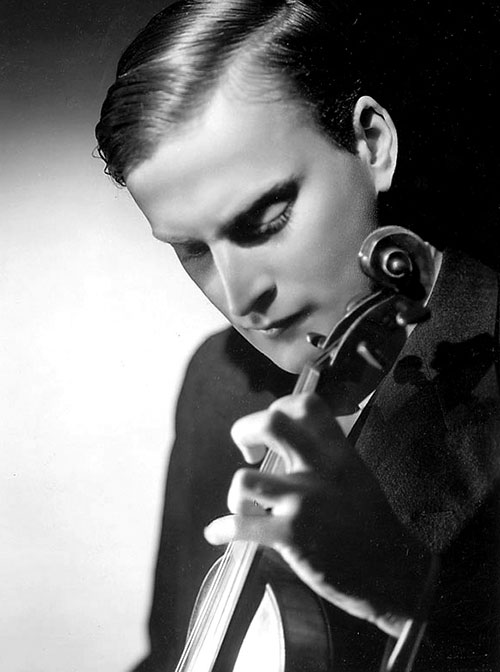
Yehudi Menuhin
STEPHANIE CHASE: He had a lot of support at home and from outside. With Michael Rabin, however, I would think that when he got slightly older he was no longer the kid violinist and started to recognize this, and that this kind of revelation makes performing more difficult.
MARTIN NASS: The Strad once had an article on Leopold Auer's pupils, and there was a photo of Oscar Shumsky in short pants. So he bridged the gap. Some of these pupils went to him when they were very young.
STEPHANIE CHASE: What do you think about Auer as a teacher from what you know?
MARTIN NASS: That was THE method. They all went to St. Petersburg to study with Auer.
STEPHANIE CHASE: But it seems like it was not a strict method, in a way, because his students – including Heifetz, Elman, Milstein, Zimbalist and Shumsky – all sounded so different from each other, first, and he also had a number of female students, such as Kathleen Parlow. Even Galamian apparently didn't want to invest a lot of time into his female students because he thought they would likely get married and give up a career.
MARTIN NASS: The teacher I had as a kid studied with a pupil of Auer – Raphael Bronstein – who taught at the Manhattan School of Music for a long time, and I first played for Bronstein when I was ten.
It's clear that Auer was capable of listening to his students and giving them independence, in contrast to Galamian, who gave his students the fingerings and bowings to every work.
STEPHANIE CHASE: Yes, this was a huge shift for me when I went to study with Grumiaux, because he didn't want to hear a piece more than once or twice and expected me to arrive at my own fingerings, bowings and interpretation. I knew I needed this, and in my own teaching I try to teach the students to not need me – sort of like being a rabbi!
MARTIN NASS: That's what a good analyst does. The patient takes over and becomes his own analyst. When I had violin lessons as an adult with Joyce Robbins, she told me that my hand was different from hers and to find my own fingerings.
STEPHANIE CHASE: There is a foundation to developing these techniques, and everyone is unique. I recall seeing Perlman playing Mendelssohn Concerto on television some years ago, and because his hands are so large I don't think he shifted until towards the end of the first page. But when the violinist has small hands we have to accommodate this, including the bow hold.
MARTIN NASS: I once had a course with the cellist Marc Johnson, who told a story about taking a job playing jingles on the radio to make money, shortly after he completed his studies at music conservatory. There was another guy there who was doing the same job. Marc was doing all these fancy fingerings and the guy said, "Kid, you're just starting out – the money is in the first position."
STEPHANIE CHASE: That's really funny! As I recall, he played in a string quartet with me when I was a nine-year-old student at Galamian's summer camp, Meadowmount, and acted as a coach. We played a Boccherini quartet and I still remember the second violin's solo, because it was abysmal.
I think that simplicity is the best approach, and to get rid of artifice. Do you have Galamian's Bach edition?
MARTIN NASS: I have the Barenreiter.
STEPHANIE CHASE: Because it's an urtext edition, that's the best. It appears that Galamian had a real aversion to open strings because his fingerings are often quite convoluted and overly complex, whereas I think Bach would have welcomed the resonance of the open strings. But it's been said that Galamian could take a mediocre player and turn him or her into a very competent player. When I was a small kid, his students included Perlman, Zuckerman, Chung, Yung-Uck Kim, and many other extremely gifted violinists who went on to have major careers.
Once again, to change the topic, you have published a number of papers in which you did research on people who are deaf.
MARTIN NASS: I worked with the deaf for a long period of time, and this goes back to my dissertation on thinking in children. I was following up on the works of the Swiss psychologist Jean Piaget, who studied thought processes and conscience development in children. And I discovered some things about it, using a more rigorous experimental design than Piaget did; that sometimes the child answered the question based on how the question was worded rather than his understanding of the phenomenon. For example, if you ask "why does the sun rise" you will get a different kind of answer rather than if you asked "how does the sun rise?" And Piaget asked a lot of his questions with "why." I also found out that if the experience was closer to the child's own experience he gave a more scientific explanation, otherwise he may give a more motivational one. For example, "why does the moon rise?" would be answered "because it has to" or "it's supposed to," rather than an explanation of the rotation of the earth.
I found that the development in the deaf children was slower but that they eventually reached the more naturalistic style of thinking, although a little bit later than the hearing children did because they did not have the stimulation and the experience of hearing. Some were operating through sign language, some through lip reading, but essentially there was development that equaled the hearing children.
STEPHANIE CHASE: A lot of spoken communication is in inflection, so that would be missing, I take it, in sign language. Did this interest come out of your interest in music and auditory stimuli?
MARTIN NASS: When I worked for the Board of Education years ago, the School for the Deaf was nearby. At that time they were absolutely against sign language and wanted the children to communicate only by reading lips, and they wanted to integrate them in classes with the hearing children. They put three or four smart deaf kids into a class with hearing children, and we would go and observe the classes and interview the teachers. What happened was that whenever the teacher wasn't looking they would sign to each other. Now this was many, many years ago and things are a lot different now; there is an acceptance of the deaf culture and sign language is supported.
STEPHANIE CHASE: I don't know anything about reading lips, but it seems to me that people use their mouths very differently and that regional accents can be so distinctive.
When my husband, who is left-handed, was in elementary school, it was customary to try and get the kids to switch to being right-handed. And I used to play recitals with a pianist who was strongly left-handed and she, too, told me that she used to get injured at school because the teachers would insist that she use scissors in her right hand.
MARTIN NASS: Some of these kids develop stammers when adults try to switch them over. There is really tremendous emotional upset.
STEPHANIE CHASE: Do you find that inflection in music is very important, and how would you describe it?
MARTIN NASS: I would describe inflection as the ability to express feelings through the notes. I've heard violinists play like machines. Technique is very important, but that's a beginning. You have a given there, and then you have the individual expression that really comes from the inside. I've done a lot of psychoanalytic supervision and have said to my supervisees, right from the beginning, you don't learn my way, I'll help you learn your way. And that's the way it should be with the musician, too. You don't imitate the teacher – the teacher helps you to develop what's inside of you.
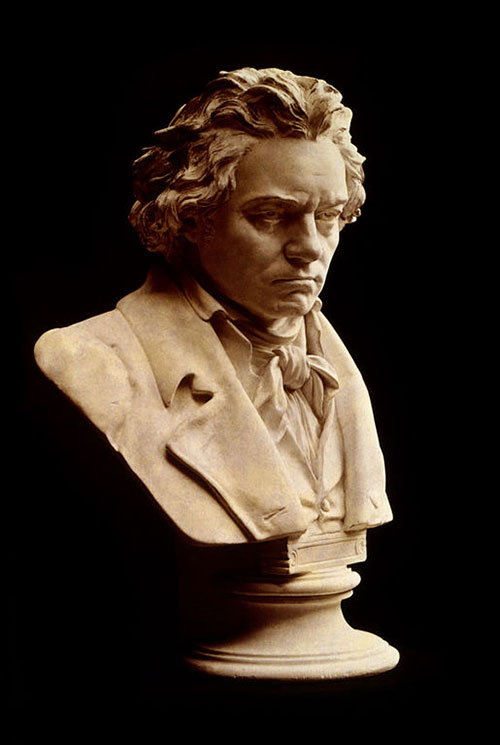
Beethoven bust (Hagen)
STEPHANIE CHASE: What musical works especially inspire you? Do you find that this has changed over the years?
MARTIN NASS: For the second part, yes. The most inspiring composer for me has been Beethoven. I think he is the greatest, and the more I listen to him and the more I study his work – particularly the later ones – the more I'm amazed at what he was able to do. Yesterday I read with a pianist the opus 30, no. 3 and opus 96 Sonatas, which are both in G major. What I was struck by in the opus 30 is how he was accenting offbeats, all the time, and that goes through a lot of his works.
STEPHANIE CHASE: This happens also in his scherzos, and recently I have really begun to appreciate their humor. He truly flaunts the rules, such as in a three-beat meter when he places a strong accent on the third beat rather than the downbeat.
MARTIN NASS: They are jokes!
STEPHANIE CHASE: Is your appreciation of Beethoven also due to his disability, or is it purely the music?
MARTIN NASS: Both, but especially the music, because he was a one of a kind. I don't think we will ever have anybody else like him.
STEPHANIE CHASE: And he had the gift to hear the music internally, due to his loss of hearing while only in his 30's, which is extraordinary.
MARTIN NASS: When he wrote the Heiligenstadt Testament [in 1802], he was coming to grips with his hearing loss.
STEPHANIE CHASE: He was contemplating suicide at the time and wrote that, "art alone stayed my hand."
MARTIN NASS: But purely on a musical basis, in comparison with other composers of his era, his is more complex – and some of it is very personal. Some of the adagios that he has written in his later string quartets really tug at my emotions.
STEPHANIE CHASE: It's wonderful that we can have these lifelong relationships with this music.
As you approach your ninetieth birthday, you have only recently retired from an active analytic practice and you have been married to your wife Marilyn for nearly seventy years. I would think that each of these facts implies an extraordinary level of fulfillment that is very difficult for most people to obtain. What is your advice for us ordinary people?
MARTIN NASS: First I would say, eat well.
STEPHANIE CHASE: By that you probably mean moderation – and not to have foie gras and champagne at every meal!
MARTIN NASS: That's right. And when I came back from World War II at age 19, I was very happy to be alive. And I felt that the rest of it was borrowed time, in a sense, because I could have not come back. I think that has shaped the optimism that I have, very basically, about lots of things. In my work, too, a lot of my patients have asked, why are you so optimistic? And sometimes I answer, well, why are you so pessimistic?
STEPHANIE CHASE: My husband is a bit of a pessimist at times, and says that not only is the glass half-empty – it has lipstick stains and is chipped, and has someone's dentures inside.
MARTIN NASS: (Laughter) The other thing was that I came of age at a time when the country was booming. I came back and finished college – the government helped pay – and my wife, whom I met in college, and I started our marriage right away. We traveled a lot to Europe, because in those days living was cheaper there and all you needed to worry about was the airfare. So we would take long vacations in the summer with our children. Professionally, I also did very well. I got an academic job at first and when I left following psychoanalytic training, people thought I was crazy because it was a professorship with tenure at a university. NYU then asked me to teach in its doctoral program and in those days, psychoanalysis was booming – everyone wanted to go into analysis. I also opened a private practice and had waiting lists for patients. This is unheard of now, today people don't want to look at themselves but try the quick fix instead, such as in taking a pill, finding instant gratification, or looking up what it says on the internet. I walk down the street sometimes and stop, because the people coming towards me are looking down at their phones and I don't know if they are going to run into me. Nobody looks at the sky or looks around anymore.
STEPHANIE CHASE: My niece met her husband while they walked by each other in the subway near Times Square, so it was a matter of just seconds of awareness, and they've been married for over ten years.
Do you find that people listen less now, because they are distracted by these devices and technologies and there's no opportunity for self-reflection? If there's no inner examination taking place, do you think that ultimately they pay a price for this?
MARTIN NASS: The price is their development as a person. Self-examination, self-understanding and going to places inside yourself that may be frightening but are there to be explored, I think all of these are what makes a person a full person.
STEPHANIE CHASE: I feel like you have probably have been so interested in every patient's story, that each is a unique individual and that there is not repetition.
MARTIN NASS: That's what I tell my students and supervisees. You don't have the same thing twice; everybody is difficult, everybody is different. You may have patients with similar background but you can't predict what's going to happen.
So I don't regret going into this profession; I've been very satisfied with my work and teaching. And I'm on a project – I'm trying to get older psychoanalysts to retire, although they don't want to. I think that to have an analyst die can be devastating to the patient who is in treatment, because there's no relationship like an analytic relationship. It's very often idealized, which is part of the treatment, and I think that is part of the problem for some of my colleagues, because they get a great deal of satisfaction from the patient who thinks they're the greatest and don't want to give that up. Often they have little else in their lives besides work. I don't think it's fair to the profession, either, because it also keeps younger analysts out. But many of the older analysts don't recognize that the idealization is part of the treatment and not about who they really are.
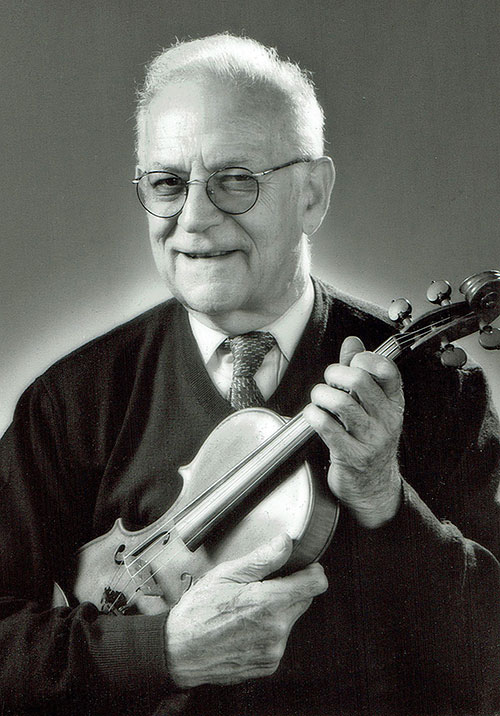
Martin Nass
I recently wrote a paper, "On the Omnipotence of the Psychoanalyst: Some Thoughts on the Need to Consider Retirement," which has to do with the recognition that it's time to step down. I have known people whose analysts died and it takes a very, very long time for them to get over it. I am planning to get other analysts together to air this at a meeting next spring. It's also part of the analysts recognizing that they are not going to live forever and that they owe it to their profession and their patients to retire.
STEPHANIE CHASE: Have the interpretations of Freud's teachings evolved over the years?
MARTIN NASS: Yes, it's an evolving and growing field. There's much in the foundation that came from Freud. But the stereotype of the analyst that never talks, that just doesn't go anymore. For example, Sir Laurence Olivier was supposed to have been analyzed by Ernest Jones, an Englishman who was in Freud's circle and also his biographer, and said of the experience, "Dr. Jones said two things to me; 'hello' at the beginning of the analysis and 'goodbye' at the end."
STEPHANIE CHASE: Over the course of your career, do you find that you and your colleagues have changed your ideas about Freud and analysis as well?
MARTIN NASS: Yes, I and most of the people that I know go to meetings and participate in study groups, so we are always learning and growing.
STEPHANIE CHASE: That sounds like the best advice for all of us. Thank you for so generously sharing your thoughts with me and Stay Thirsty.
Links:




